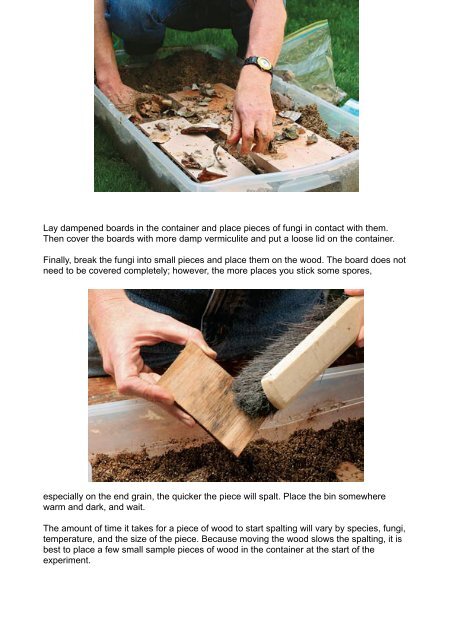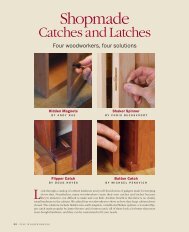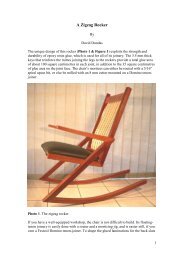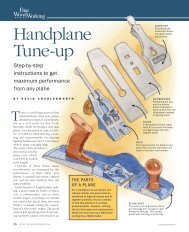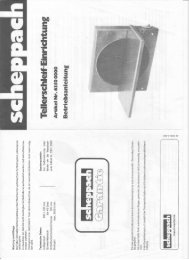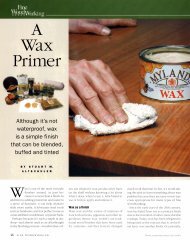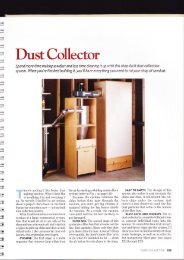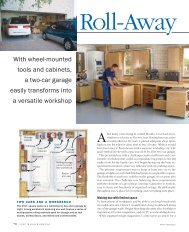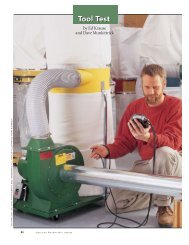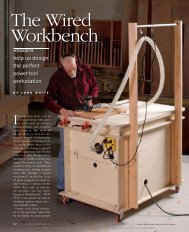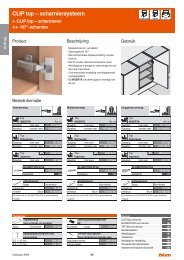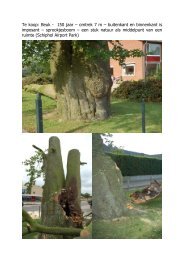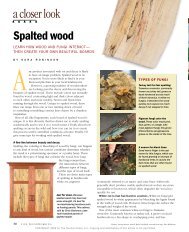Spalt Your Own Lumber Learn how wood and fungi interact to create ...
Spalt Your Own Lumber Learn how wood and fungi interact to create ...
Spalt Your Own Lumber Learn how wood and fungi interact to create ...
Create successful ePaper yourself
Turn your PDF publications into a flip-book with our unique Google optimized e-Paper software.
Lay dampened boards in the container <strong>and</strong> place pieces of <strong>fungi</strong> in contact with them.<br />
Then cover the boards with more damp vermiculite <strong>and</strong> put a loose lid on the container.<br />
Finally, break the <strong>fungi</strong> in<strong>to</strong> small pieces <strong>and</strong> place them on the <strong>wood</strong>. The board does not<br />
need <strong>to</strong> be covered completely; <strong>how</strong>ever, the more places you stick some spores,<br />
especially on the end grain, the quicker the piece will spalt. Place the bin somewhere<br />
warm <strong>and</strong> dark, <strong>and</strong> wait.<br />
The amount of time it takes for a piece of <strong>wood</strong> <strong>to</strong> start spalting will vary by species, <strong>fungi</strong>,<br />
temperature, <strong>and</strong> the size of the piece. Because moving the <strong>wood</strong> slows the spalting, it is<br />
best <strong>to</strong> place a few small sample pieces of <strong>wood</strong> in the container at the start of the<br />
experiment.


